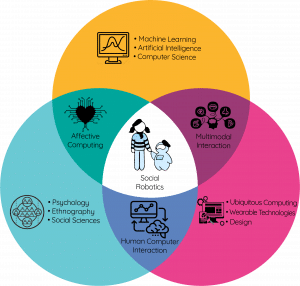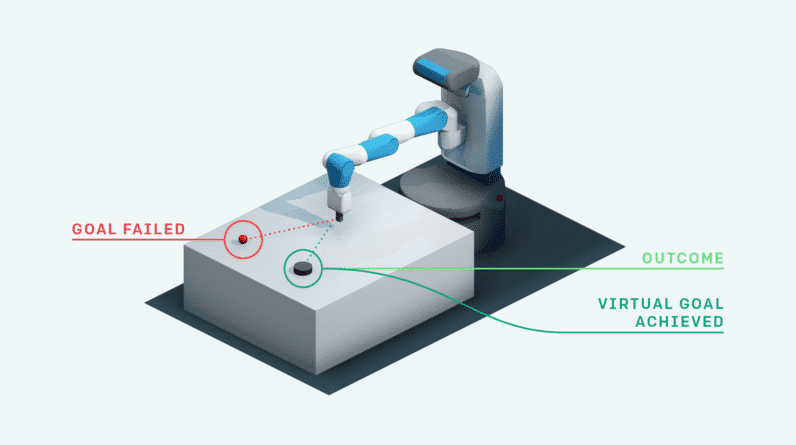In today’s rapidly advancing digital age, the threat of cyberattacks is at an all-time high. As hackers become increasingly sophisticated, traditional security measures struggle to keep up. This is where the power of artificial intelligence (AI) steps in. With its ability to swiftly analyze vast amounts of data, detect anomalies, and adapt to evolving threats, AI has emerged as a formidable defense mechanism in the world of cybersecurity. By harnessing AI’s intelligence and its capability to learn from past attacks, organizations can now proactively fight back against malicious activities and safeguard their invaluable data.

The Importance of AI in Cybersecurity
In today’s digital landscape, cybersecurity has become a critical concern for individuals and organizations alike. With cyber threats evolving at an alarming rate, traditional security measures are no longer sufficient to protect sensitive information. This is where Artificial Intelligence (AI) comes in. AI has emerged as a powerful tool in the fight against cyber threats, offering enhanced threat detection, streamlining incident response, and improving vulnerability management.
Enhancing Threat Detection
One of the key benefits of AI in cybersecurity is its ability to enhance threat detection. Traditional signature-based approaches often fail to detect new and emerging threats, leaving systems vulnerable to attacks. AI, on the other hand, leverages advanced algorithms and machine learning techniques to analyze vast amounts of data and identify patterns indicative of potential threats. By continuously learning from new data and evolving threat landscapes, AI-powered systems can quickly adapt to detect and prevent sophisticated cyber attacks.
Streamlining Incident Response
When a security breach occurs, time is of the essence. The longer it takes to identify, contain, and mitigate the impact of a cyber attack, the greater the damage can be. AI-driven incident response solutions help streamline this process by automating various tasks and providing real-time analysis. This allows security teams to quickly assess the severity of an incident, prioritize their response efforts, and take immediate action to thwart the attack. By reducing response times, AI enables organizations to minimize the potential damage caused by security incidents.
Improving Vulnerability Management
Identifying vulnerabilities and promptly addressing them is crucial to maintaining a robust cybersecurity posture. However, the sheer number of vulnerabilities that exist today, coupled with limited resources and budgets, makes this task challenging. AI-enabled vulnerability management solutions help organizations stay on top of their security by continuously scanning systems, identifying vulnerabilities, and providing risk prioritization. By leveraging threat intelligence integration and analyzing potential attack vectors, AI can proactively identify and address vulnerabilities before they can be exploited by malicious actors.
Types of AI Used in Cybersecurity
To effectively combat cyber threats, various types of AI techniques are used in cybersecurity. Each type brings its unique capabilities and strengths to the table, enabling comprehensive defense strategies.
Machine Learning
Machine learning is a subset of AI that focuses on algorithms and statistical models that enable computer systems to learn and make predictions or decisions without explicit programming. In cybersecurity, machine learning algorithms analyze vast amounts of data and identify patterns to detect anomalies, classify new threats, and predict potential vulnerabilities. By continually updating their models based on new data, machine learning models can improve their accuracy and stay ahead of rapidly evolving cyber threats.
Natural Language Processing
Natural Language Processing (NLP) is concerned with the interaction between computers and human language. In cybersecurity, NLP is utilized to analyze and understand human language-based data, such as logs, emails, and social media content. By applying NLP techniques, AI systems can identify potential security risks, detect phishing attempts, and prioritize alerts based on the content and context of messages. NLP also plays a vital role in automating incident response by enabling systems to comprehend and respond to user queries and commands.
Deep Learning
Deep learning is a subset of machine learning that focuses on creating artificial neural networks capable of learning and making decisions on their own. Deep learning algorithms, inspired by the structure and function of the human brain, can process vast amounts of data using multiple layers of interconnected artificial neurons. In cybersecurity, deep learning is particularly effective in image and speech recognition tasks, enabling the detection of malicious files, spam emails, and even voice-based attacks. By automatically extracting intricate features from complex data, deep learning models enhance the accuracy and speed of threat detection.

AI-Powered Threat Detection
AI-powered threat detection is revolutionizing the way organizations defend against cyber attacks. By leveraging advanced analytics and machine learning algorithms, AI can identify and respond to threats in real-time, offering unparalleled protection against both known and emerging threats.
Behavioral Analytics
Behavioral analytics plays a crucial role in AI-powered threat detection. By establishing a baseline of normal behavior for users, devices, and networks, AI systems can quickly identify any deviations from the norm that could indicate a potential threat. For example, if an employee’s account suddenly starts accessing sensitive data outside of their regular working hours, an AI system can flag it as suspicious behavior and trigger an alert for further investigation. This proactive approach allows organizations to detect threats before they can cause significant damage.
Anomaly Detection
Anomaly detection is another critical component of AI-powered threat detection. By analyzing large datasets and comparing them to established patterns, AI systems can identify anomalous activities that deviate from typical behavior. For example, if a system administrator suddenly starts executing unusual commands or if a particular user’s login activity shows inconsistencies, an AI system equipped with anomaly detection capabilities can raise an alert. This helps organizations identify potential threats that may go unnoticed by traditional security measures.
Predictive Analytics
Predictive analytics takes threat detection a step further by using historical data and machine learning algorithms to predict future cyber attacks. By analyzing past attack patterns and correlating them with current data, AI systems can forecast possible threat vectors and help organizations proactively strengthen their defenses. Predictive analytics also enables security teams to prioritize their resources and focus on the most critical vulnerabilities, significantly reducing response times and potential damages.
AI-Driven Incident Response
Cyber attacks are a constant threat, and organizations need to be well-prepared to respond swiftly and effectively when they occur. AI-driven incident response solutions automate various aspects of the incident response process, enabling organizations to detect, contain, and remediate attacks more efficiently.
Automated Remediation
AI-driven incident response involves automating remediation actions to swiftly neutralize a security incident. By analyzing threat intelligence and leveraging predefined response playbooks, AI systems can automatically execute remediation actions, such as isolating compromised systems, blocking malicious IP addresses, or resetting compromised user accounts. Automated remediation not only saves valuable time but also eliminates the risk of human errors or delays in taking the appropriate actions.
Real-Time Alerting
Real-time alerting is a critical component of AI-driven incident response. By continuously monitoring network traffic, system logs, and other data sources, AI systems can quickly identify potential security incidents and alert the relevant security personnel. Real-time alerts provide security teams with valuable information about the nature and severity of an incident, enabling them to take immediate action, contain the attack, and prevent further damage. This proactive approach ensures that security incidents are identified and addressed in their early stages, minimizing their impact.
Incident Prioritization
With the ever-increasing volume of security alerts, it can be challenging for security teams to prioritize their response efforts effectively. AI-driven incident response solutions can help address this challenge by automatically prioritizing security incidents based on criticality and potential impact. By analyzing various factors, such as the source of the attack, the type of vulnerability, and the assets at risk, AI systems can assign priority levels to incidents, enabling security teams to focus their resources on the most critical threats first. This efficient allocation of resources allows organizations to respond more effectively to security incidents and mitigate their impact.

AI-Enabled Vulnerability Management
Vulnerability management is a critical component of any cybersecurity strategy. However, the sheer number of vulnerabilities that exist today, combined with limited resources, can make this task overwhelming. AI-enabled vulnerability management solutions offer organizations a proactive and efficient approach to identify, prioritize, and address vulnerabilities.
Continuous Scanning
Traditional vulnerability scanning approaches often involve periodic assessments that can miss newly identified vulnerabilities, leaving systems at risk. AI-enabled vulnerability management solutions address this limitation by employing continuous scanning capabilities. By constantly monitoring systems, networks, and applications, AI systems can detect vulnerabilities as soon as they emerge, ensuring that organizations stay protected against the latest threats. Continuous scanning provides real-time visibility into an organization’s security posture, allowing prompt remediation of vulnerabilities before they are exploited.
Threat Intelligence Integration
AI-enabled vulnerability management solutions integrate threat intelligence data, enabling organizations to stay ahead of evolving threat landscapes. By leveraging the wealth of information available from various sources, such as public databases, security vendors, and industry reports, AI systems can identify vulnerabilities that are actively being exploited or are likely to be targeted. Integrating threat intelligence with vulnerability management allows organizations to prioritize their efforts and focus on vulnerabilities that pose the greatest risk, providing a more efficient and effective approach to vulnerability mitigation.
Risk Prioritization
Not all vulnerabilities carry the same level of risk for an organization. AI-enabled vulnerability management solutions help organizations prioritize their efforts by assessing the potential impact and exploitability of each vulnerability. By considering factors such as the criticality of the affected system, the presence of publicly available exploits, and the likelihood of successful exploitation, AI systems can assign risk scores to vulnerabilities. This risk-based approach allows organizations to allocate their resources more effectively, ensuring that vulnerabilities with the highest potential impact are addressed first.
Challenges in Implementing AI in Cybersecurity
While AI offers tremendous potential in enhancing cybersecurity capabilities, its implementation is not without challenges. Addressing these challenges is crucial to ensure the effectiveness and reliability of AI-powered cybersecurity solutions.
Data Quality and Availability
The success of AI algorithms depends on the quality and availability of data. To train and fine-tune AI models, organizations need access to diverse and representative datasets that accurately capture the complexity of real-world cyber threats. However, obtaining such data can be challenging, as organizations may be reluctant to share sensitive information or may not have sufficient data repositories. It is essential to address data quality issues and promote data sharing frameworks to ensure that AI algorithms receive the necessary training and produce reliable results.
Lack of Skilled Professionals
Implementing AI-powered cybersecurity solutions requires a skilled workforce capable of developing, deploying, and managing these technologies. However, there is currently a shortage of professionals with the necessary expertise in AI and cybersecurity. This shortage poses a significant challenge for organizations seeking to adopt AI in their cybersecurity strategies. Addressing this challenge requires investing in training programs, encouraging academic research in AI and cybersecurity, and fostering collaborations between academia and industry.
Ethical Concerns
AI systems have the potential to make autonomous decisions that can have significant consequences. This raises ethical concerns regarding the accountability and transparency of AI-powered cybersecurity systems. Organizations need to ensure that AI algorithms operate within ethical boundaries, adhere to privacy regulations, and avoid biases. Developing ethical guidelines, establishing oversight mechanisms, and incorporating human intervention in critical decision-making processes are vital to address these ethical concerns and build trust in AI-based cybersecurity solutions.

Addressing Bias and False Positives in AI-Based Systems
AI-powered cybersecurity systems are not immune to biases and false positives. To ensure that these systems remain accurate and reliable, it is crucial to address these issues through appropriate methodologies and ongoing monitoring.
Data Diversity and Representation
Biases in AI algorithms can arise due to the data used to train them. If the training data is not diverse and representative of the target population, the AI system may produce biased results. To mitigate this, organizations must ensure that their training datasets are comprehensive, encompassing data from different sources, demographics, and contexts. By incorporating diverse perspectives, AI algorithms can make more informed and unbiased decisions, reducing the risk of false positives or discriminatory outcomes.
Ongoing Monitoring and Calibration
AI models require continuous monitoring and calibration to ensure their accuracy and reliability. As cyber threats evolve, AI algorithms must adapt to new attack vectors and patterns. Regularly updating and fine-tuning AI models based on real-world data and feedback from security experts is crucial to keep the systems effective. Ongoing monitoring helps identify any shifts in the model’s performance, potential biases, or false positives, enabling organizations to address these issues promptly and maintain the integrity of AI-based cybersecurity solutions.
Human Oversight and Intervention
While AI excels in processing vast amounts of data and making autonomous decisions, human oversight and intervention are still necessary. Humans can provide the critical thinking and contextual understanding that AI algorithms may lack. By involving human experts in the decision-making process and incorporating their domain knowledge, organizations can validate the outputs of AI systems and ensure that false positives are minimized. Human oversight also helps address complex ethical dilemmas and ensures that AI-based cybersecurity solutions align with organizational values and compliance requirements.
The Role of AI in Insider Threat Detection
Insider threats, whether intentional or unintentional, pose a significant risk to the security of organizations. AI has a pivotal role to play in detecting and addressing such threats, enabling organizations to protect their valuable assets effectively.
Monitoring User Behavior
AI systems can monitor user behavior and identify activities that deviate from normal patterns. By establishing baselines of typical behavior for individual users and comparing it to their real-time actions, AI can detect suspicious activities that may indicate an insider threat. For example, if an employee suddenly accesses confidential information outside of their usual responsibilities or exhibits unusual network traffic patterns, an AI system can raise an alert. By promptly flagging potential insider threats, organizations can investigate and take appropriate actions to prevent any illicit activities.
Detecting Abnormal Patterns
AI algorithms are adept at spotting abnormal patterns in various types of data. By analyzing log files, network traffic, and system activities, AI can identify anomalies that may be indicative of an insider threat. For example, if an employee starts transferring large amounts of data to external storage devices or establishes unauthorized connections to external servers, an AI system can detect these irregularities and notify security teams. By promptly identifying and responding to abnormal patterns, organizations can mitigate the risks posed by insider threats.
Identifying Data Leakage
Insider threats often involve the unauthorized extraction or leakage of sensitive data. AI-powered systems can effectively identify data leakage by monitoring network traffic, email communications, and file access activities. AI algorithms can flag suspicious behavior, such as large data transfers, unauthorized access attempts, or abnormal email attachments. By detecting data leakage incidents in real-time, organizations can take immediate action to prevent further data compromise, protecting their intellectual property, customer information, and other valuable assets.

AI and the Future of Cybersecurity
As cyber threats continue to evolve, AI will play an increasingly crucial role in helping organizations defend against these threats. The future of cybersecurity will witness the integration of AI into various aspects of the security landscape, enabling more intelligent and efficient defense strategies.
Intelligent Malware Detection
Malware continues to be a persistent and evolving threat, requiring organizations to stay one step ahead. AI-powered malware detection solutions can analyze the characteristics and behavior of known malware to identify new variants. By leveraging machine learning and deep learning techniques, AI can detect subtle patterns and anomalies in code and behavior, enabling prompt identification and mitigation of malware attacks. Intelligent malware detection systems will provide organizations with the agility and adaptability required to combat sophisticated threats effectively.
Autonomous Cyber Defense Systems
The future of cybersecurity will see the rise of autonomous cyber defense systems that leverage AI to detect, protect, and respond to threats in real-time. These systems will continuously analyze network traffic and other data sources, identify potential threats, and autonomously take necessary actions to neutralize the threats. Autonomous cyber defense systems will offer rapid response capabilities, reducing the reliance on human intervention and enabling organizations to mitigate the impact of security incidents more efficiently.
Enhanced Privacy and Data Protection
AI will also play a pivotal role in enhancing privacy and data protection. AI algorithms can help organizations detect privacy breaches and ensure compliance with data protection regulations. By monitoring data flows, analyzing access patterns, and identifying potential vulnerabilities, AI-powered systems can assist organizations in safeguarding sensitive information and preventing unauthorized access. With the increasing emphasis on privacy and data protection, AI will become an indispensable tool for organizations striving to maintain the trust of their customers and stakeholders.
Ethical Considerations in AI-Powered Cybersecurity
While AI offers significant benefits in enhancing cybersecurity capabilities, it also raises ethical considerations that must be addressed to ensure responsible and effective use of these technologies.
Privacy and Surveillance Concerns
The use of AI in cybersecurity involves the collection and analysis of vast amounts of data, raising concerns about privacy and surveillance. Organizations must strike a balance between utilizing AI-powered tools to enhance security and respecting individuals’ privacy rights. Implementing robust privacy policies and practices, adhering to data protection regulations, and promoting transparency in data handling are essential in mitigating privacy concerns associated with AI-powered cybersecurity.
Transparency and Accountability
AI algorithms are often complex and opaque, making it challenging to understand how they reach certain decisions or predictions. In the context of cybersecurity, it is crucial to promote transparency and explainability in AI models to build trust and accountability. Organizations must prioritize the development of AI algorithms that are explainable and provide clear justifications for their decisions. This transparency enables security professionals, regulators, and other stakeholders to evaluate and validate the effectiveness and fairness of AI-powered cybersecurity systems.
Impact on Human Decision Making
As AI becomes more integrated into cybersecurity processes, there is a concern about the impact on human decision making. While AI algorithms can augment and assist human experts, they should not completely replace human judgment and discretion. Organizations must ensure that human experts remain involved in critical decision-making processes, providing oversight, and integrating their domain knowledge. A balanced approach that combines the strengths of AI and human judgment is necessary to achieve optimal cybersecurity outcomes while considering ethical implications.
In conclusion, AI is revolutionizing cybersecurity by enhancing threat detection, streamlining incident response, and improving vulnerability management. With its ability to analyze vast amounts of data and adapt to evolving threats, AI offers unprecedented capabilities in combating cyber attacks. By leveraging machine learning, natural language processing, and deep learning, organizations can detect threats, respond rapidly to incidents, and prioritize vulnerability mitigation. However, the implementation of AI in cybersecurity is not without challenges. Data quality and availability, the shortage of skilled professionals, and ethical concerns need to be addressed to ensure the reliability and ethical use of AI-powered cybersecurity solutions. With ongoing efforts to address these challenges, AI will continue to play a vital role in ensuring the security and privacy of individuals and organizations in the face of ever-evolving cyber threats.






